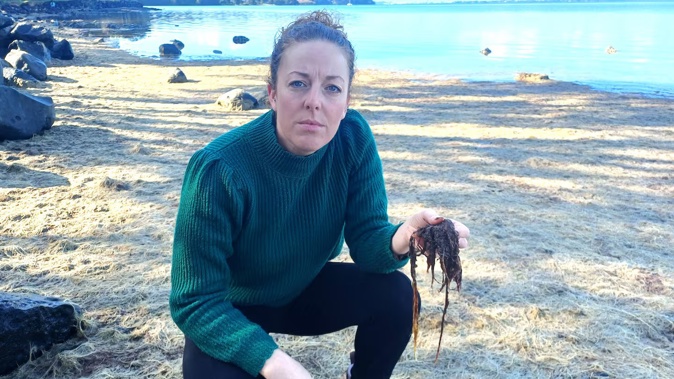
The eagle eyes of a Northland Regional Councillor have spotted a new seaweed which is a pest overseas.
The red seaweed Asparagopsis taxiformis was recently spotted at Whangārei Harbour beach Tamaterau, by councillor and ecologist Amy Macdonald.
It was also found at Iris Shoal, at Kawau Island in north Auckland, in water about 11m deep, mixed in with other red seaweeds.
The Iris Shoal find was made by NIWA staff who were preparing to survey another exotic seaweed: invasive caulerpa. Invasive caulerpa can spread from the size of a freckle to cover the equivalent of a rugby field within a few weeks, in the right conditions.
The fight to stop the spread of caulerpa has led to boat anchoring bans covering more than 1000ha in the Bay of Islands and 10,000ha around Aotea/Great Barrier. The invasive pest has also been found at Great Mercury Island, the Mokohinau Islands, Kawau Island, Waiheke Island and not far from Leigh Marine Reserve.
It is unclear if the red seaweed will cause the same problems, or any problems, said Jack Craw, Northland Regional Council’s Biosecurity and Biodiversity Working Party chair.
Asparagopsis taxiformis is considered native to the Rangitāhua/Kermadec Islands and is similar to - and can grow among - New Zealand’s own red seaweed Asparagopsis armata, he said.
“We don’t know how this weed will react in the mainland New Zealand marine environment, and, at this stage, there is no evidence to suggest that the seaweed is affecting biodiversity in these areas.
“However, internationally, it has been shown to out-compete and displace native species, impacting biodiversity,” Craw said.
Officials suspect it has been at both the Whangārei Harbour and Kawau Island locations for some time - likely finding its way there on a vessel either through biofouling, on an anchor, anchor chain or dirty equipment - and is likely to be in other spots.
As it is a new species, any decisions about control, if any, will be made by Biosecurity New Zealand in the first instance, Craw said.

It is unclear if the red seaweed Asparagopsis taxiformis will be a problem around New Zealand's mainland but it has caused problems overseas.
“Currently, Biosecurity New Zealand is completing a risk assessment but, in the meantime, the regional council urges all vessel owners to be extra vigilant and ensure hulls are clean before moving.
“It’s also important to make sure that anchors and all top-side gear are also clean, free of fouling and, if possible dry, before moving.”
Craw said the seaweed is difficult to identify and specialised testing was required to confirm its presence.
Red seaweeds have been researched by scientists, both in New Zealand and overseas, for their properties that can reduce methane emissions when used in feed for stock.
Craw said anyone who thinks they have found Asparagopsis taxiformis outside Whangārei Harbour should phone the MPI exotic pest and disease hotline on 0800-80-99-66 or go to report.mpi.govt.nz to report online.
Denise Piper is a news reporter for the Northern Advocate, focusing on health and business. She has more than 20 years in journalism and is passionate about covering stories that make a difference.
Take your Radio, Podcasts and Music with you









